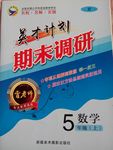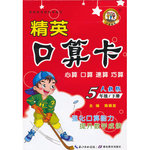题目内容
【题目】阅读下面材料,在空白处填入1个适当的单词或括号内单词的正确形式。将答案填写在答题卡的相应位置。
In 【1】(tradition) Chinese culture, tai chi is often related to the Chinese idea of yin and yang, the idea that one can see two sides in everything. Once 【2】a time, Taoist Zhang Sanfeng saw a bird attacking a snake in the Wudang Mountains in Hubei province. The snake’s defense inspired him 【3】(create) a set of 72 movements, which used【4】(soft) and power from inside to defeat violent force.
For those【5】do it, tai chi can be practiced anytime and anywhere without equipment or a gymnasium. And learning to do it【6】(correct) gives us a practical way to achieve such things as balance, motor control and rhythm(节奏) of movement. So it【7】(believe) that practicing tai chi can in some way help us stand, walk, move and run better.
Tai chi’s benefits certainly go beyond physical ones. For Marleni Calcina from Peru, who 【8】(do) tai chi for over 10 years, it’s not only a sport, but also a way of life. And 【9】is tai chi that has helped her understand the value of “going slowly”. Now, practicing tai chi is like 【10】(speak) with her soul.
【答案】
【1】traditional
【2】upon
【3】to create
【4】softness
【5】who
【6】correctly
【7】is believed
【8】has done
【9】it
【10】speaking
【解析】本文为介绍说明文。文章主要介绍了太极的起源和对人们的好处。
【1】考查词性转换。此处意指“在传统的中国文化中”,所以使用名词tradition的形容词形式作答。故填traditional。
【2】考查词组搭配。固定词组:once upon a time“从前”。故填upon。
【3】考查非谓语动词。词组搭配:inspire sb. to do sth.鼓舞某人做某事。故填to create。
【4】考查词性转化。根据并列连词and后的名词power可知,此处应使用soft的名词形式作答。故填softness。
【5】考查定语从句。分析句子结构可知,此处为定语从句,空格处在从句中作主语,先行词those指代“那些人”。故填who。
【6】考查词性转化。分析句子结构可知,此处修饰动词do,应使用副词形式,意为“正确地”。故填correctly。
【7】考查动词语态。根据句意可知,此处指“被相信”,故应使用被动语态;同时本句描述的是客观事实,应使用一般现在时态。故填is believed。
【8】考查动词时态。根据本句中的时间状语for over 10 years及下文中的时态可知,此处应使用现在完成时。故填has done。
【9】考查强调句。强调句型为:It be + 被强调部分 + that/who + 剩余句子成分。如果去掉It be及that/who,剩余成分可组成完整句子,则为强调句。由此可判断,本句为强调句型。故填it。
【10】考查非谓语动词。句意:现在,练太极就像跟她的灵魂在交流。根据句意及句子成分分析可知,此处like为介词,应使用speak的ing形式作答。故填speaking。

 英才计划期末调研系列答案
英才计划期末调研系列答案 精英口算卡系列答案
精英口算卡系列答案